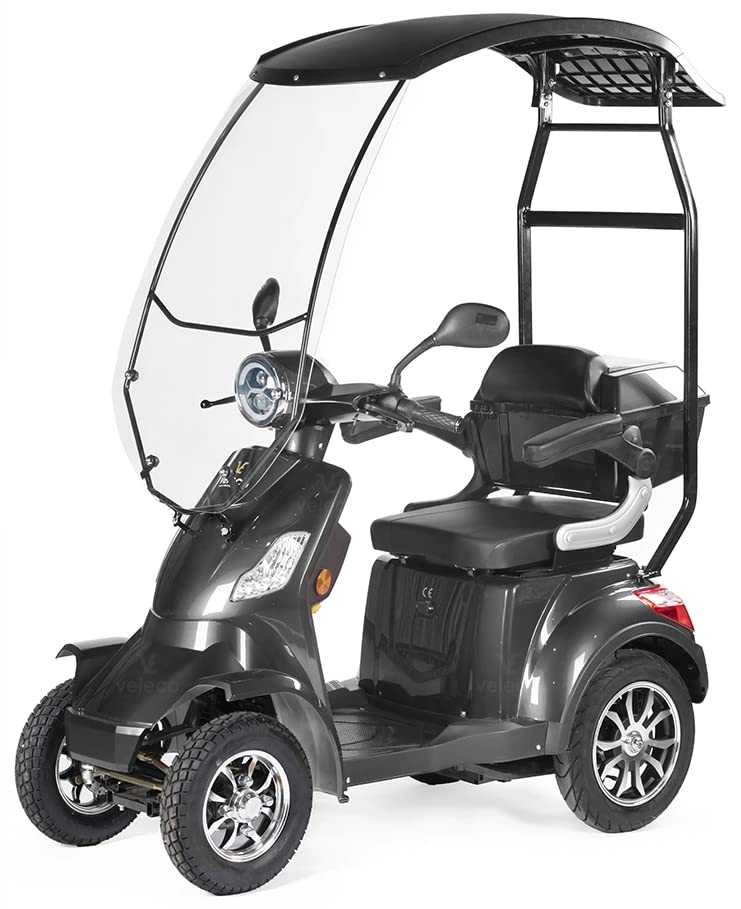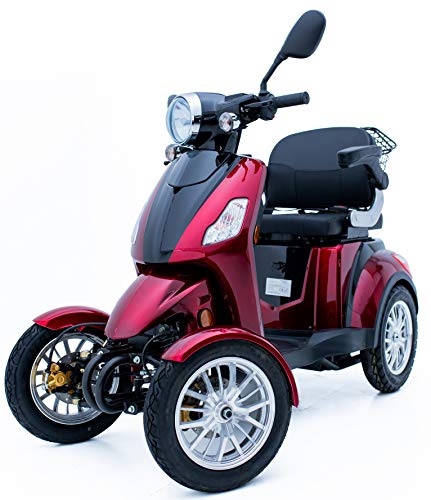Why People Don't Care About Electric Assistive Technology
페이지 정보
작성자 Aimee 작성일24-12-25 04:45 조회12회 댓글0건관련링크
본문
 fastest electric mobility scooter Assistive Technology
fastest electric mobility scooter Assistive TechnologyBy 2030, the number of people who need assistive devices will nearly double. These devices can be purchased; modified, for instance, adding tennis balls to a walker or even crafted.
Some examples of assistive technology are pencil grips, ergonomic kitchen tools (such as OXO good grips) and keyboards that are specialized. Advanced devices may also be considered, including screen magnifiers.
Functional electrical stimulation
Functional electrical stimulation (FES) is also referred to as functional electrical stimulation is a method that relies on small heavy duty cheap electric mobility scooters for adults 4 wheel mobility scooter lightweight electric scooter for adults scooter - demilked.Com, charges to stimulate muscles that are weak or weak because of an injury, such as a stroke or Multiple Sclerosis. The electrical impulses allow the muscle to move normally. This treatment is used to facilitate movement, such as grasping or walking, and it can aid in improving bladder and bowel function and decrease the chance of developing pressure sores.
Electrical stimulation has been used for many years to treat various ailments. Examples include cochlear implant to restore hearing, phrenic pacemakers that assist respiration, and systems that aid in the elimination of bladders by people. It may also help to reduce tremors caused due to Parkinson's disease. Electrical stimulation is delivered using electrodes that can be implanted into the body or placed on the skin without penetrating the skin, referred to as noninvasive or percutaneous electrodes.
The intensity of the stimulation can be adjusted to create different outcomes. The intensity of a stimulus may, for example, influence the nature and location of the nerve fibers targeted. Larger fibers located nearer to the electrode are targeted first. The duration of the stimulus is an additional important aspect. This can affect the intensity of fatigue by altering the duration that the muscle is activated.
While FES can be effective in helping a person with an injury to the spinal cord regain functional movement, it's not for all. It's not recommended for people who suffer from epilepsy that isn't controlled or a cancerous lesions on the area of the skin that is being stimulated, or who are oversensitive to the sensations of stimulation. It is not recommended for people with a skin condition that is poor because the self-adhesive electrodes can lead to irritation or pressure injuries.
Power chairs
Power chairs are wheelchairs with motors that utilize an cheap electric mobility scooter motor and battery to help with mobility. These wheelchairs can be controlled by a joystick, or other control system. They offer more independence for those who are not able to walk. They also let users travel longer distances without having to rely on others for help. In addition they can be customized and adjusted to meet the specific needs of users.
There are a variety of power chairs, including portable electric mobility scooters for adults, indoor/outdoor and mid-sized. Portable power chairs are light and can be folded in order to fit into tiny spaces. They are ideal for use at home or for short distances. Power wheelchairs that are mid-sized offer a balance of flexibility and endurance. Outdoor and indoor powerchairs are designed for outdoor use however they can be adjusted for indoor use. Outdoor and indoor power chairs have grippy tyres that aid in maneuvers on kerbs. They also include a kerb climber.
Assistive technology is a vital tool for those with physical impairments. The technology can be anything from voice recognition software sold in stores, to specialized seating that enhances the user's comfort and independence. High-tech assistive technologies are often more expensive, but they offer advanced features and customizable options that are ideal for users with a variety of needs.
To find the ideal solution for your individual needs, it is best to seek a professional opinion by a physician or a physical therapist. They will recommend the best device for you, and help you select the correct size and demonstrate how to use it. They can also assist you to choose accessories and integrate the equipment into your daily routine.
Railings
Sometimes referred to as handrails, railings run diagonally alongside ramps or stairs to provide an enduring grasping point for people who are on the incline. To avoid accidents, many building codes have regulations about the height and spacing of handrails. Handrails can be molded to an easy-to-hold shape or constructed out of materials that are simple to grasp. Functional handrails that meet ADA regulations have an opening for fingers on one or both sides. They also must be sturdy enough to withstand 200 pounds of force.
Handrails can also offer tactile guidance for those with visual impairments. They can assist them in navigating the stairs. Handrails let people feel the number of steps or curves, as well as landings by running their hands along them. Handrails can be used to direct people away from danger during emergency situations.
Electronic pillboxes
The electronic pillbox was designed to help seniors remember to take their medication. The electronic pillbox uses visual and audio reminders and triple alarms, to make sure seniors take their medication at the right time. This technology can help reduce medication errors, which are the leading cause of death for seniors. It also helps avoid fatal overdoses.
The device is comprised of a container for medication with compartments for every day and the time of the week, a battery powered sensor with an international mobile data connection and a set of LEDs and speakers that can provide audio and visual notifications of dueness of pills. This device is designed for patients who regularly take many vitamins or medicines and caregivers in retirement homes and hospitals.
In the simplest model, the pillbox sensor is built inside the lid and is able to monitor the status of each subcompartment lid. The sensors are activated when the lid is opened by a user, and a message is sent to microcontroller. The signal is timestamped, and stored in the circular memory cache of the microcontroller 18LF252.
The system is designed to be reprogrammable with the use of an external Arduino board, which is responsible for each of the different parts. The Arduino board will be in charge of emitting light and sound signals for the pillbox in order to inform the senior that a pill has to be taken and wirelessly sending the notification to caregivers. The acoustic signals and light will remain on for a brief duration, and then bleep every 10 seconds until the senior interacts. The pillbox will then dispensing the pill, and the internal speakers and LEDs will turn off.

댓글목록
등록된 댓글이 없습니다.
